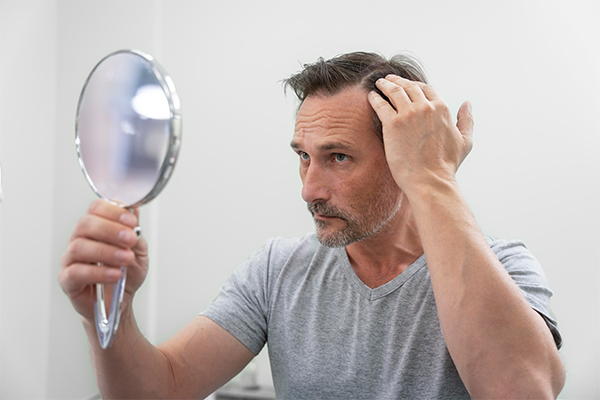What Causes Hair Loss?

What Causes Hair Loss?
What causes hair fall? This is a complex question that does not have a straightforward answer. Hair loss can be caused by many things. Hair loss can be caused by a variety of factors, including hormone imbalances, medication, trauma, autoimmune diseases, infections, and dermatological conditions (skin). A wide range of conditions can cause hair loss. It is important that any patient who experiences hair loss or “patches” on the scalp see a doctor who specializes.
There are many causes of hair loss. But genetics is the most common.
These “family genes”, which affect things such as eye color and height, are also responsible for the most common types and causes of hair loss.
The female pattern of hair loss is more complex than its male counterpart. Experts agree that genetics are the primary cause of hair loss, but a complicated and poorly understood pathway involving multiple hormones is responsible. The pattern of female pattern hair loss usually begins at the center of the scalp and spreads outwardly. The thinning is often described by women as a “widening of their part”, which then leads to a generalized thinning of the entire scalp. This condition is most common between 40-60 years of age and can be associated with life changes such as menopause or pregnancy. If you believe that you are suffering from FPHL, you should consult a doctor who is familiar with hair loss (an Endocrinologist or Hormone Specialist if possible). They will perform lab work and discuss the possible causes and possible treatment.
MPHL is becoming more common and easier to diagnose. According to estimates, approximately half of all men will experience genetic hair loss in their lifetime. This number rises to almost 80% when men reach their 80s and 90s. A number of genes can cause hair loss, similar to FPHL. However, the main cause is dihydrotestosterone, or DHT. This hormone is an offshoot testosterone and is the most commonly found “male” hormone in the body. DHT is an important and naturally occurring hormone that all men have. DHT is only “sensitive” in some men. Male pattern hair loss can be experienced by those with sensitive hair follicles. It is not possible for those who do not have sensitive follicles to experience this. Although hair loss can happen at any age, it is most common in the 20s and 30s. It develops in “patterns”, which are the reason for the name. They begin with hair loss in the frontal area, particularly in the “corners” above your eyes and in the “crown area in the back (sometimes affectionately called the “bald spot”. Advanced MPHL patients eventually reach complete baldness at the top of their scalps, with only a small fringe remaining on the sides or back (follicles that are genetically resistant). MPHL is easier to diagnose and is easier to treat. Men with MPHL should consult a hair specialist to determine if they are eligible for FDA-approved preventive medication (Propecia (finasteride), Rogaine (minoxidil), or hair transplant surgery.

